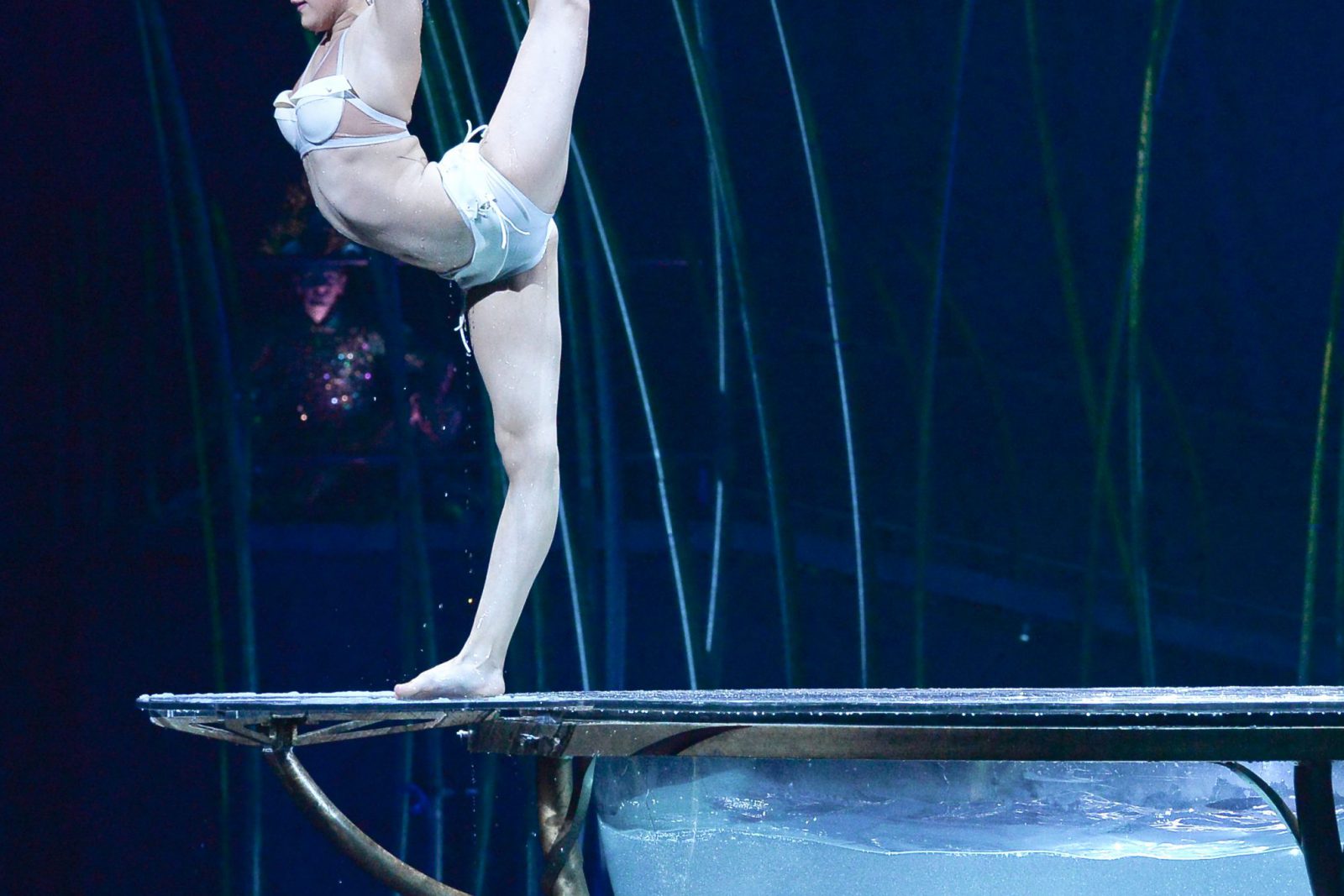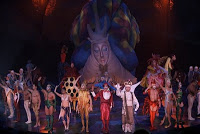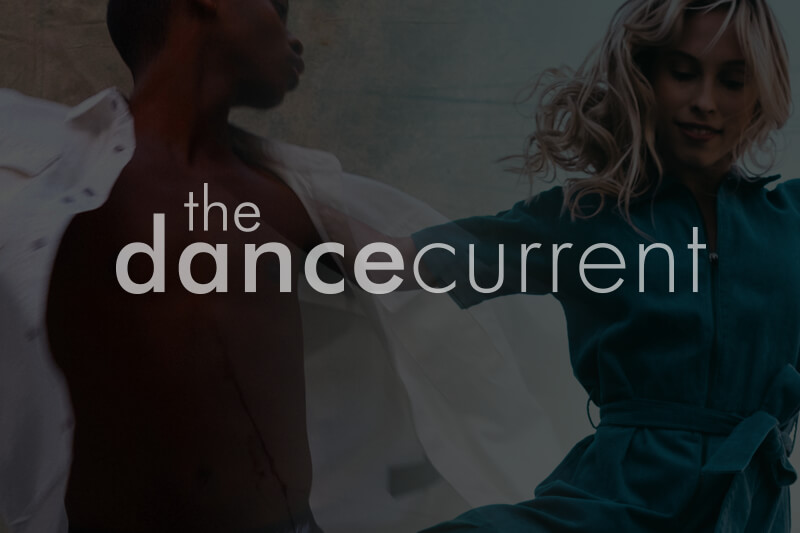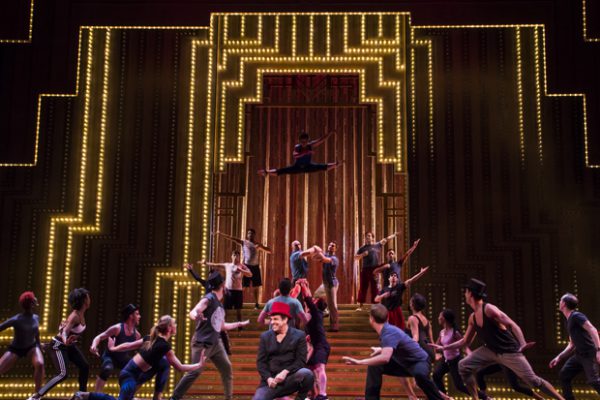I remember being quite impressed in elementary school when I heard that the Cirque du Soleil was Canadian. You mean those high-flying, spectacular trapeze artists were from my own country? How cool. Something so exotic always seemed to come from somewhere else. I never had any aspirations to join the circus, as my dance classes clearly taught me that I wasn’t one of the ultra flexible ones, but their world fascinated me for that very reason: I couldn’t pull off what they were doing.
The story of the troupe started out on a small, seemingly insignificant stage. Although now they are known all over the world and are the largest and most successful circus, Cirque du Soleil was once just a group of young Québec performing artists who showed off their stilt-walking, fire-breathing and juggling skills on the streets of Baie-Saint-Paul, a small town near Québec City. It was the eighties and they called themselves Les Échassiers Baie-Saint-Paul (the Baie-Saint-Paul Stiltwalkers), founded by Gilles Ste-Croix. Although not initially a financial success, the performers worked and toured their show, eventually breaking even.
From their modest success, a young hopeful named Guy Laliberté and the rest of the troupe created a cultural festival called La Fête foraine de Baie-Saint-Paul that offered performances and workshops for the public. This put the troupe on the map enough for the Québec government to approve a grant for a show called Le Grand Tour, by the newly formed Cirque du Soleil (Circus of the Sun), that was to be created for the city of Québec’s 450th anniversary celebrations of French explorer Jacques Cartier’s arrival. That was the chance the group needed to catapult themselves onto the world stage.
They performed in what would become their iconic blue and yellow big top tent, seating 800 people. A tour across Canada to Vancouver’s Children’s Festival and Expo ’86 grew their need for a tent capacity of 1,500 spectators, allowing them to head south for the first time and present their show at the Los Angeles Festival. By 1990, the troupe was performing to a 2,500-strong crowd and travelling to London and Paris, then onto Japan and other parts of Europe.
Possibly one of the most important moves for the company was their first permanent show in Las Vegas, of which there are now seven, including The Beatles LOVE at the Mirage. Perhaps the most ingenious of them all is the aquatic show O at the Bellagio, where a pool of water makes up the stage and synchronized swimmers and divers perform in and out of it. Then there was the Superbowl XLI performance in Miami, the permanent Viva ELVIS at ARIA Resort & Casino in Las Vegas, and two shows, KÀ and TOTEM, written and directed by Canadian favourite Robert Lepage. They have also taken on the first large-scale show about Michael Jackson since his death in The Immortal World Tour.
Melena Rounis, one of the dancers in The Beatles LOVE show in Las Vegas, is as impressed as the rest of the world with this once-small company, and she has been working with them since 2008. Melena and I grew up dancing together at Caulfield School of Dance in Port Moody, BC. She was always the most flexible in our group of girls, but had no intention of joining a circus company.
Her training didn’t have any hint of circus in it, nor did anyone in our group consider a company like Cirque as a future employer. Being half Greek, Melena was surrounded by other kinds of music and dance. This led to her studying jazz by the time she was ten years old, and then adding ballet, modern and hip hop at the studio. Of course, Greek dancing was also something she learned, as well as a little bit of Chinese and Indian dance (bhangra and bharatanatyam).
After high school, she trained towards a BFA in contemporary dance at Simon Fraser University, covering Graham, Cunningham and Limón techniques. From there she took on more hip hop, as well as locking, popping, house, voguing, waacking and commercial dance choreography in Los Angeles and New York City. Travelling back and forth from coast to coast was challenging and unpredictable for her, but she loved every second of it.
“I learned a lot about people,” she says. “A lot about what it takes, and what people think it takes [to be a dancer] … In my various trips to LA, I did it a couple different ways. There were short visits where I stayed with friends and hopped around, and there were longer visits where I would either rent a furnished apartment, preferably from a friend, or stay in a hostel.
“I must say that the Orbit [Hotel and] Hostel near Melrose and Fairfax was a great experience for me. I stayed there with one of my dear friends and we were pure entertainment to all who stayed there for our month-and-a-half adventure. They liked us there. We would wake up usually around 11am and were in class, depending on the day, anywhere from 2pm to 11pm.
“We danced. We would come back to the hostel like sweaty messes exhausted with big smiles on our faces and everyone would want to hear about what we did, learned and, most importantly, wanted to see what we learned (or learn a lil’ somethin’ themselves). We had the opportunity to perform at the Choreographers Carnival at the Key Club several times, at Battle Zone [a clowning and krumping dance competition made famous in the 2005 documentary, Rize], as well as meet some really inspiring individuals. They are definitely what helped keep us motivated and improving.
“In New York City I stayed with friends, as it is super expensive to find a place when travelling by yourself, though I’m sure there are reasonable ways to do it. I was fortunate enough to know some people within Manhattan, Harlem and the Heights. I learned the subway, sort of, while I travelled there but every time I went back I stayed in a different part of town, so there was definitely some adjustment time for me to figure out how to get where I wanted to go every time I visited.
“My schedule in New York was similar to my schedule in LA: wake up around 10 or 11am and take class well into the evening, meet people and be social. I definitely did more sightseeing and food tasting, though, while in New York. There are so many great little spots to try! I trained at all the major studios, Broadway Dance Center, Peridance [Capezio Center], Steps [on Broadway], with friends in their apartments, in the club – they know how to dance in New York City!”
So it seemed Melena was on course for a career in the mainstream dance world, or perhaps a spot on So You Think You Can Dance. Instead, “In 2005, there was an advertisement in a provincial newspaper about open call auditions for Cirque du Soleil, but they were in Las Vegas. [Since] Las Vegas is the entertainment capital of the world, which is exciting, and there wasn’t too much that interested me in Vancouver at the time, and nothing really holding me back, I thought, hey, why not go. At worst, I will have a vacation in Las Vegas.
“I decided to go try my luck and, to my surprise, after two FULL eight- to nine-hour days of auditioning, I made it to the end of the audition process and was put on file. The show they had me in mind for (The Beatles LOVE) was five months into creation already and there were no more contracts available at the time. They told me that those contracts were up for renewal in two years and that at that point I may hear something.”
Not one to wait around for someone else to call, Melena stayed in Vancouver and opened a dance studio on Commercial Drive, called the Drive Dance Centre, with her business partner Geneen Georgiev in 2007. (It’s now one of the best drop-in dance centres in the city.) But as John Lennon once said, life is what happens to you while you’re busy making other plans.
“I got a call from Cirque [almost a full two years after my audition] stating that I was a potential candidate for a position in The Beatles LOVE in the Mirage Hotel and Casino in Las Vegas. It was late October and they were curious as to my availability. Being a new business owner, this call made me very nervous, but understanding what a life changing experience this would be, made my nervousness turn to excitement. They were definitely concerned that I had just opened up a business but I assured casting that the studio wouldn’t be an issue and let them know I was interested and available.
“They told me there were just several other auditions that needed to take place before they could confirm I had the job. I asked where, so that I could have a bit of an idea what I was up against, and they told me Toronto, New York, Chicago and possibly Europe. I was stunned. That many other places? That many more people? I didn’t know what to say so I wished them luck and hung up the phone thinking, well, that was the biggest, fastest high and low I had ever experienced in a matter of minutes.
“In January 2008 I received another call from casting informing me that they were through auditioning folks and that I got the job. My family and business partner were very understanding and encouraging and we decided that this was a once-in-a-lifetime experience I had to have.” A couple of months later and she was in Montréal at Cirque headquarters for intensive preparation.
“We trained Monday through Friday for two weeks, 9am to 5pm, sometimes 6pm. We had a gum booting class with a brilliant man from South Africa brought all the way to Montréal to educate us on the style of dance and history of its origin. Stomping our feet in rhythm with his and learning his percussion patterns was how we would start the morning at 9am for roughly one hour. I would barely be awake at this point and he would be shouting ‘with more energy!’ in his South African accent. It was priceless.
“We would then learn choreography from the show, go for strength testing and training to make sure we were fit and healthy to do ten shows a week with no potential risks, and go to costume fittings and measurements. We even had plaster moulds taken of our heads so that they would have the correct sizing and measurements to create our head pieces accurately. I was able to re-choreograph sections of the show where I was featured to better suit my style, we got a sneak peak at what they were creating for Zed in Japan and we even got in a couple days of sightseeing.”
Training was different and yet the same as her regular dance show preparation. “Given the fact that I was being integrated into an already fully functional show,” Melena says, “the initial training was the same as it would be for any major production that is already up and running. There were many elements and things to learn about in a condensed period of time, which made it challenging, yet exciting.
“I was taught how to properly hang in a harness, as well as use a swivel harness while automation moved me up and down and in and out of the space on stage, which was new to me, and the importance of working out or conditioning outside of my discipline. I became much more aware of my surroundings at all times and the importance of continuity in my choreography and blocking on a daily basis.
“I witnessed the artists training for other shows in Montréal, which was inspiring, but I didn’t have a full grasp of what Cirque would be like for me until I was surrounded by my fellow cast members at LOVE. The true difference between being a dancer and a Cirque performer wasn’t fully comprehensible for me until we got to Las Vegas.
“I think the most unique part about working for Cirque is the company’s ability to combine so many different skills, talents, specialties, ethnicities, cultures and heritages under one roof into an hour-and-a-half production. It’s amazing.”
By April, Melena had moved to Vegas and rehearsals at the Mirage started in full swing. It was a condensed schedule of long days. “It was completely different trying to figure everything out on the stage. The LOVE theatre sits in the round so just navigating your way in the space was challenging, let alone the fact that the stage is powered by hydraulics and it moves in pieces with a top speed of a foot a second. We quickly learned the importance of knowing where you are going at all times and always taking the same pathway.
“We had two weeks’ worth of staging and rehearsals on stage before we actually went into the show and were integrated slowly, several acts or cues at a time until we knew and were comfortable with the whole show. We watched the show at least ten times and shadowed the artists we were replacing. It all went very smoothly.”
Melena was performing by May and settled into life with Cirque, where she still works. “Years later, rehearsals are roughly the same as when we first integrated. As the cast continues to grow and change over it is truly a never-ending integration process, which can become wearing on anyone given the amount of times we have had to integrate someone into the show because they are new or returning back after an absence.
“The most valuable things that I learned joining Cirque don’t necessarily apply to my art as much as they do to my day-to-day appreciation for life, and an opportunity such as this.
“On a daily basis we are surrounded by a plethora of languages – German, French, Portuguese, Russian, Romanian, Spanish, English, Swedish, Zulu, British and Australian slang – I could go on! We get to experience different cultural holidays, foods, traditions, words, sayings and so much more that makes this experience so beautiful and like no other.
“To me these differences in themselves are the tools we have gained and are what unite us as a cast and in some ways as a family. They have helped build and form Cirque’s reputation and internationally acclaimed success, and are one of the reasons you cannot duplicate a production company such as theirs. We all have such a great appreciation and admiration not only for each other’s abilities and work ethics, but for who each and every one of us is and where we come from.”
That camaraderie also makes the demanding show schedule easier to handle. Melena goes into the theatre on work days at around 3 or 4pm, but sometimes as early as 1:30pm for training or staging. She then does a half hour of Pilates, a strength training session with one of their personal trainers or a twenty-five-minute run on the treadmill, and some physical therapy. Make-up is a fifty-minute chore, although she has now gotten it down to around half an hour if need be.
The show itself is an hour and a half maximum, as per Las Vegas casino rules, and then she stretches and does preventative icing before heading home at about midnight, five days a week, “just like any other job.” Although contracts are signed on a yearly basis, about a third of the cast has remained the same since the beginning. The turnover is mostly with the children, as they need six boys to work a maximum of four days a week (eight shows) for the “Kids of Liverpool” section. These children are privately schooled by Cirque and help keep the atmosphere light behind the scenes.
As for Melena, you can see her on stage right from the beginning of the show. “I believe my character name is Baby in Black and I mainly wear the rainbow leg warmers and arrow print jumper with the blue head-band,” she smiles.
“I can usually be found straight away in the top of the show performing to ‘Get Back’, as well as locking on top of the VW Beetle we have on stage during ‘Drive My Car’, if I’m not flying in the ‘Something’ act. I am also one of the falling heads in ‘Mr. Kite’. I play a groupie who is so intoxicated that her head keeps falling off … It’s quite brilliant.
“During the ‘Peace and Love’ section of the show, I can sometimes be seen as a jellyfish in ‘Octopus’s Garden’ and in ‘Lady Madonna’ or ‘Come Together’, provided I’m not performing as Lady Madonna that evening. Ultimately our roles, as you can see, rotate and we essentially all understudy each other’s spots to a certain degree. It is useful for the company and it helps keep us stimulated.”
Some f the remarkable opportunities that working for Cirque has given Melena also keep her stimulated. Among them was escorting Sir Paul McCartney, Yoko Ono and Olivia Harrison on stage at the five-year anniversary of LOVE in front of a packed house filled with friends, family and celebs. “It was a pretty surreal experience.”
This is an excerpt from the book, Dancing Through History: In Search of the Stories that Define Canada by Lori Henry (Dancing Traveller Media, 2012; ISBN 978-0-9876897-6-4).
Learn more >> www.LoriHenry.ca
Tagged: Circus, Performance, Urban, International






